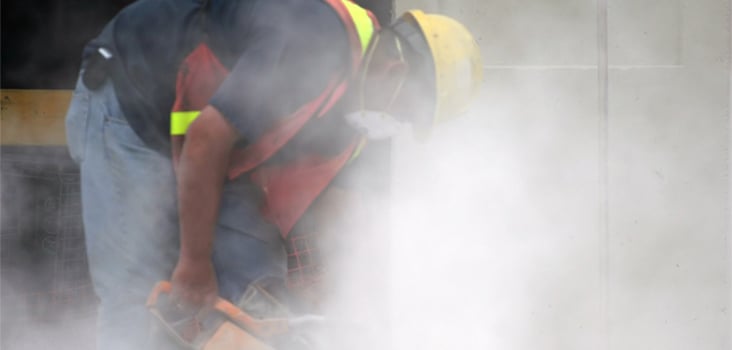
What is Silica and Why is it Dangerous?
All the commotion of a construction site tends to build up clouds of dust. But that dust isn’t just dust - it’s a bunch of tiny crystalline silica particles that pose a serious threat to everyone exposed. To address the critical nature of this issue, especially on worksites where silica exposure is high, the Occupational Safety and Health Administration (OSHA) released a final rule in 2016 that tightens the restrictions on the amount of silica workers can be exposed to on the job.
To most effectively reduce silica exposure, employers should understand what crystalline silica is, who is at risk of exposure, and what results from high levels of exposure.
What is crystalline silica?
Crystalline silica, also referred to as quartz, is a common mineral. It’s found in soil, sand, granite, concrete, rock, and many other materials. Cutting, chipping, grinding, and drilling these materials creates a lot of dust, which contains tiny crystalline silica particles. This airborne silica dust can easily be breathed in, causing a major health hazard for exposed workers.
What is the danger of crystalline silica exposure?
Crystalline silica has been classified as a human lung carcinogen, and can cause serious lung disease and lung cancer. It only takes a very small amount of respirable silica dust to create a health hazard.
One of the dangerous effects of silica exposure is a disease called silicosis, which can be contracted after just a few months of high exposure. Silicosis occurs when silica dust enters the lungs and causes the formation of scar tissue, reducing the lungs’ ability to take in oxygen. There is no cure for silicosis, and cases can be disabling or even fatal.
Who is at risk of crystalline silica exposure?
Nearly two million U.S. workers are at risk of silica exposure every year. This includes employees who work in construction, maritime, manufacturing, and hydraulic fracturing. More than 100,000 of those workers are at a high risk of exposure based on their job responsibilities.
This high-risk exposure is a result of certain job tasks, including:
- Abrasive blasting
- Foundry work
- Stonecutting
- Rock drilling
- Quarry work
- Tunneling
If your employees are at risk of crystalline silica exposure, it’s essential that you follow the regulatory standards required by OSHA. Concentra can provide the tools you need to meet these standards, like respirator fit tests that we offer at all our centers nationwide.
To send your employees for a respirator fit test and clearance evaluation, which includes a review of the required OSHA Medical Evaluation Questionnaire, contact your local center or sign up for a Concentra account today .
To learn more about how to manage silica exposure, and for more tips on how to keep your workforce safe and healthy, contact a Concentra work health representative.



